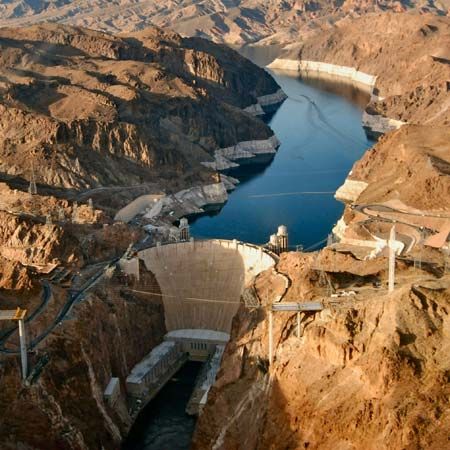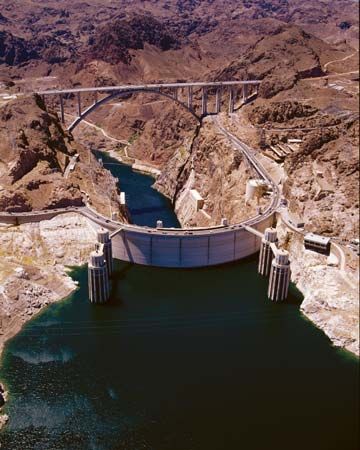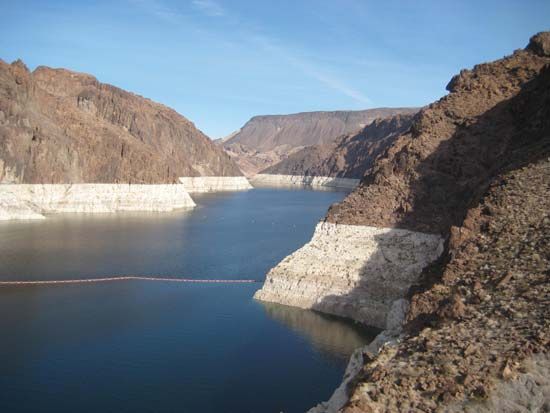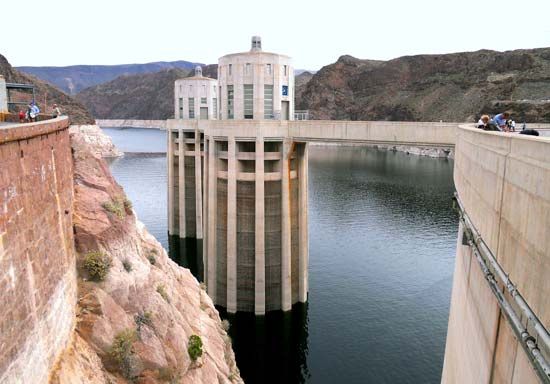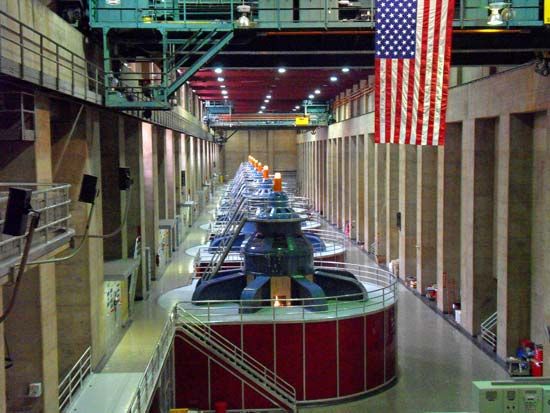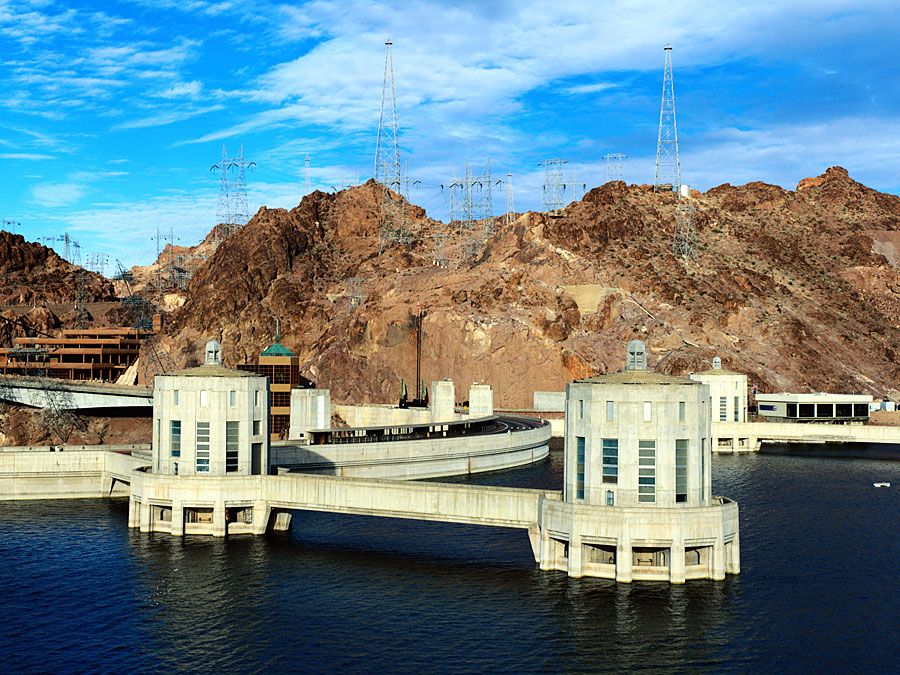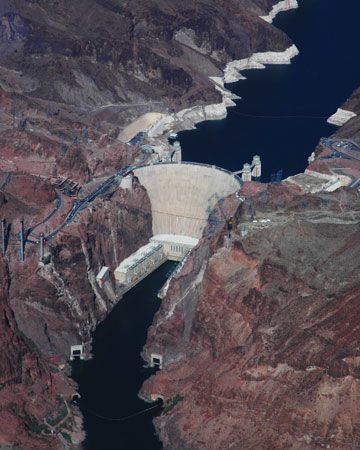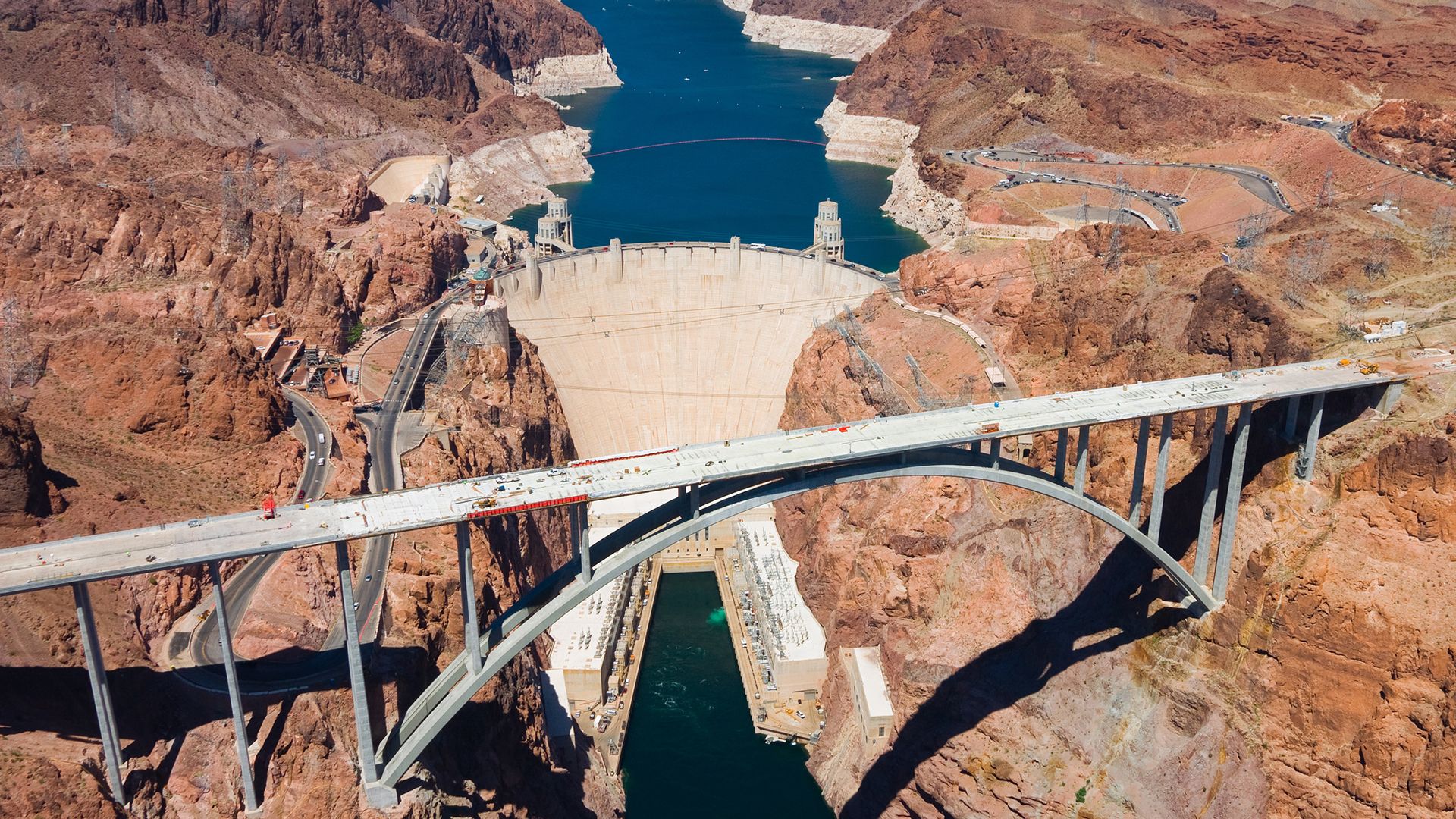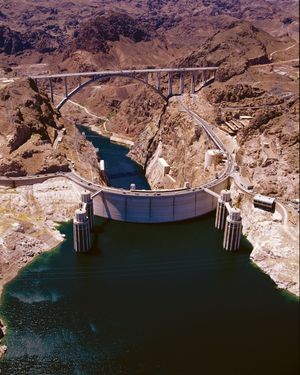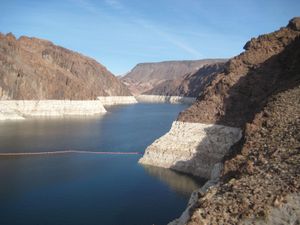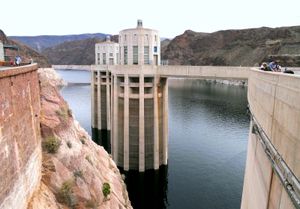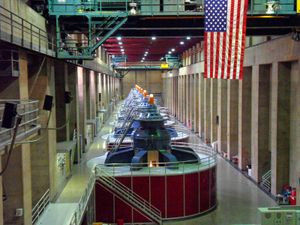Hoover Dam
- Formerly called:
- Boulder Dam
Hoover Dam, dam in Black Canyon on the Colorado River, at the Arizona-Nevada border, U.S. Constructed between 1930 and 1936, it is the highest concrete arch-gravity dam in the United States. It impounds Lake Mead, which extends for 115 miles (185 km) upstream and is one of the largest artificial lakes in the world. The dam is used for flood and silt control, hydroelectric power, agricultural irrigation, and domestic water supply. It is also a major sightseeing destination, with some seven million visitors a year, almost one million of whom go on tours through the dam.
Hoover Dam is 726 feet (221 metres) high and 1,244 feet (379 metres) long at the crest. It contains 4,400,000 cubic yards (3,360,000 cubic metres) of concrete. Four reinforced-concrete intake towers located above the dam divert water from the reservoir into huge steel pipes called penstocks. The water, after falling some 500 feet (150 metres) through the pipes to a hydroelectric power plant in the base of the dam, turns 17 Francis-type vertical hydraulic turbines, which rotate a series of electric generators that have a total power capacity of 2,080 megawatts. Nearly half of the generated electric power goes to the Metropolitan Water District of Southern California, the city of Los Angeles, and other destinations in southern California; the rest goes to Nevada and Arizona. The dam, power plant, and reservoir are owned and managed by the U.S. Department of the Interior’s Bureau of Reclamation.
Hoover Dam is named in honour of Herbert Hoover, the U.S. president during whose administration (1929–33) construction began on the dam and whose work as commerce secretary in the 1920s secured agreements necessary for the project to proceed. Erected during the Great Depression, the dam was a major endeavour that employed thousands of workers; around 100 fatalities occurred during its construction. Although legislation passed by Congress in 1931 officially named the dam for Hoover, officials in the succeeding administrations of Franklin D. Roosevelt and Harry S. Truman referred to it as Boulder Dam, its name during the planning stages before construction. In 1947 Truman signed a congressional resolution restoring the structure’s formal name to official use.
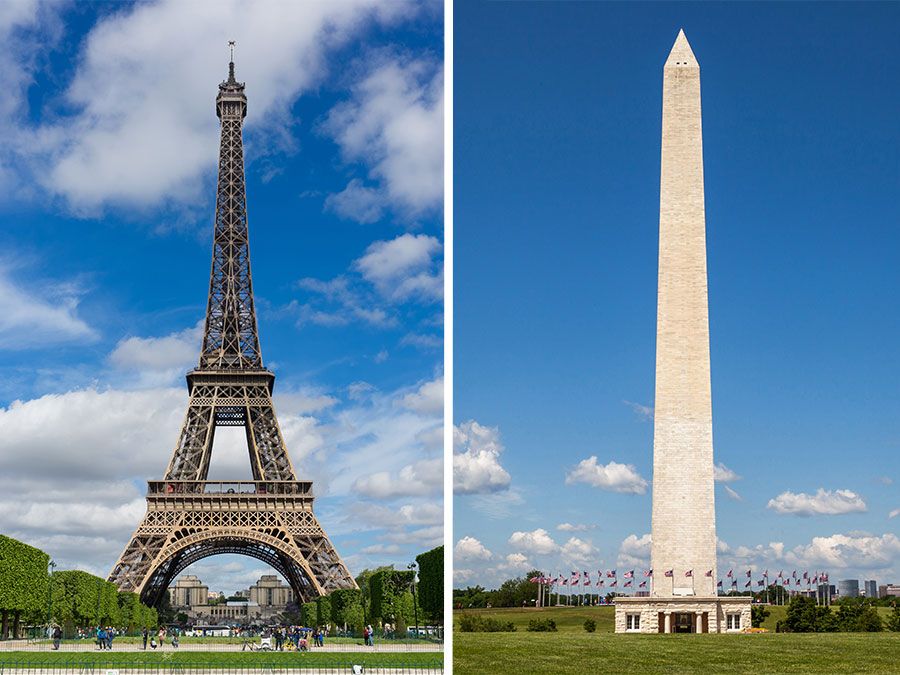
From the time of the dam’s construction, a federal highway traversed the dam’s crest, serving both visitors to the dam and travelers between Nevada and Arizona. As the dam and surrounding Lake Mead recreation area rose in popularity, traffic increased; traffic problems became especially severe under the security restrictions imposed after the attacks of September 11, 2001. Construction began in January 2005 on a long-planned Hoover Dam Bypass Project, and in October 2010 a concrete arch bridge with a 1,060-foot (322-metre) span—the longest in North America for that type of bridge—opened for through traffic within view of Hoover Dam. The old road along the crest is reserved for use by visitors to the dam.

